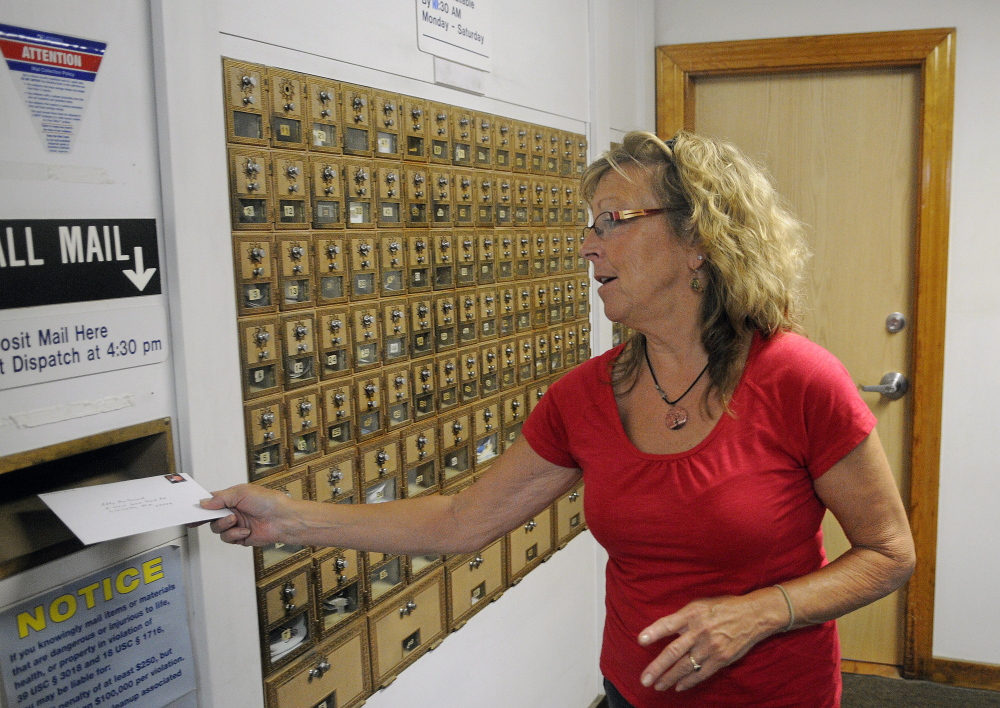As far as backbones of rural Maine go, the local post office ranks somewhere just behind the country store. But while country stores are hanging tough against the big-box stores that are increasingly found just a little farther down the road, small rural post offices are in real trouble.
That’s despite a short reprieve granted two years ago by the U.S. Postal Service, which approved a plan to reduce hours at 13,000 of the smallest post offices – including 24 in southern and midcoast Maine – instead of closing them altogether.
Many of those post offices already have reduced their hours. East Baldwin and Sebago held community meetings recently to determine the best times to be open for business. Several communities, including West Kennebunk and West Newfield, are scheduled to hold meetings in the coming weeks.
But that is unlikely to be the final word on the matter.
The Postal Service will review the numbers from each of the affected post offices every year to determine whether further cuts are necessary. For most of the offices, the financial outlook is not pretty.
Nationwide, customer retail visits to post offices dropped 27 percent from 2005 to 2011, from 1.28 billion to 930 million.
The average post office costs $114,000 a year to operate, according to the Postal Service, and the bottom 4,500 in the country earn an average of $15,000 annually. In all, 88 percent of rural post offices were losing money as of 2012.
Cutting back the hours at 13,000 locations is expected to save $500 million a year, but that doesn’t come close to covering the multibillion-dollar losses the Postal Service suffers each year.
To do that, much more comprehensive reform is necessary. But, like most things, the proposal has stalled in Congress.
A bill that would save billions by eliminating Saturday mail delivery and reforming the way the Postal Service accounts for its retirement benefits has not been taken up by either the House or the Senate, despite the apparent bipartisan support for the proposal.
That kind of reform, coupled with at least a plateau in the decline of post office visits, appears to be the only way to avoid further cuts and closures at rural post offices. And right now, neither looks likely.
At least we’ll still have country stores.
Send questions/comments to the editors.



Success. Please wait for the page to reload. If the page does not reload within 5 seconds, please refresh the page.
Enter your email and password to access comments.
Hi, to comment on stories you must . This profile is in addition to your subscription and website login.
Already have a commenting profile? .
Invalid username/password.
Please check your email to confirm and complete your registration.
Only subscribers are eligible to post comments. Please subscribe or login first for digital access. Here’s why.
Use the form below to reset your password. When you've submitted your account email, we will send an email with a reset code.